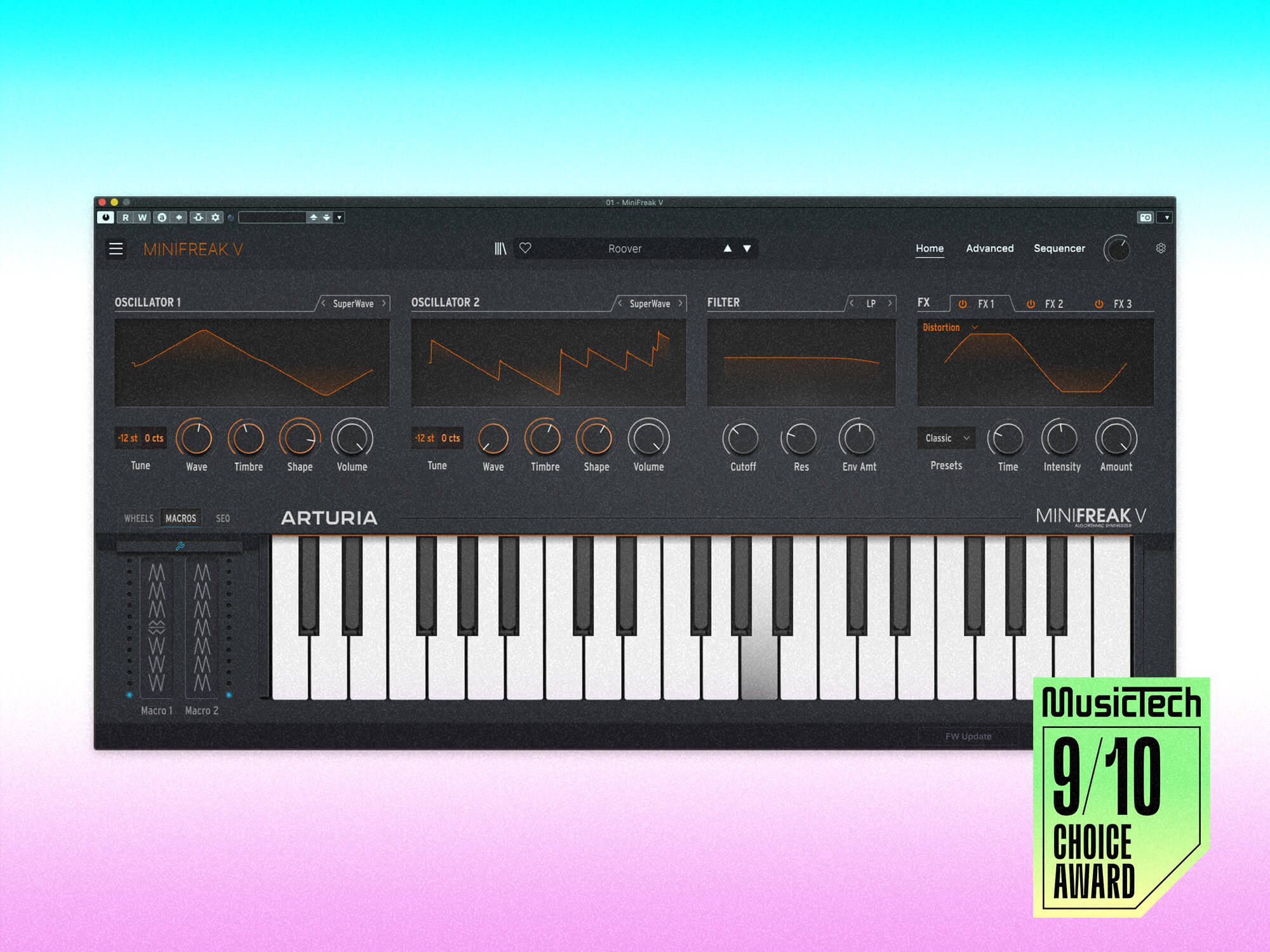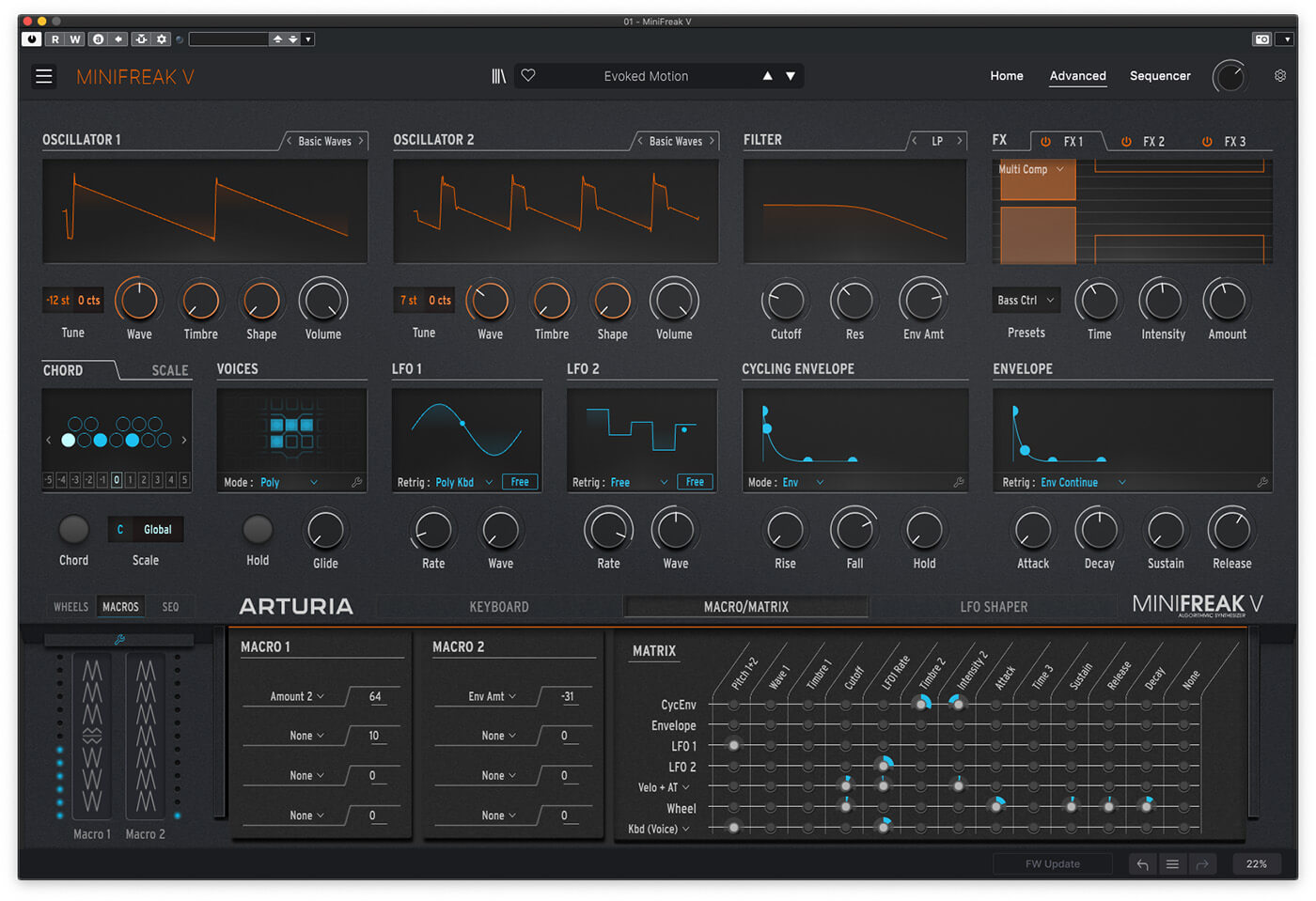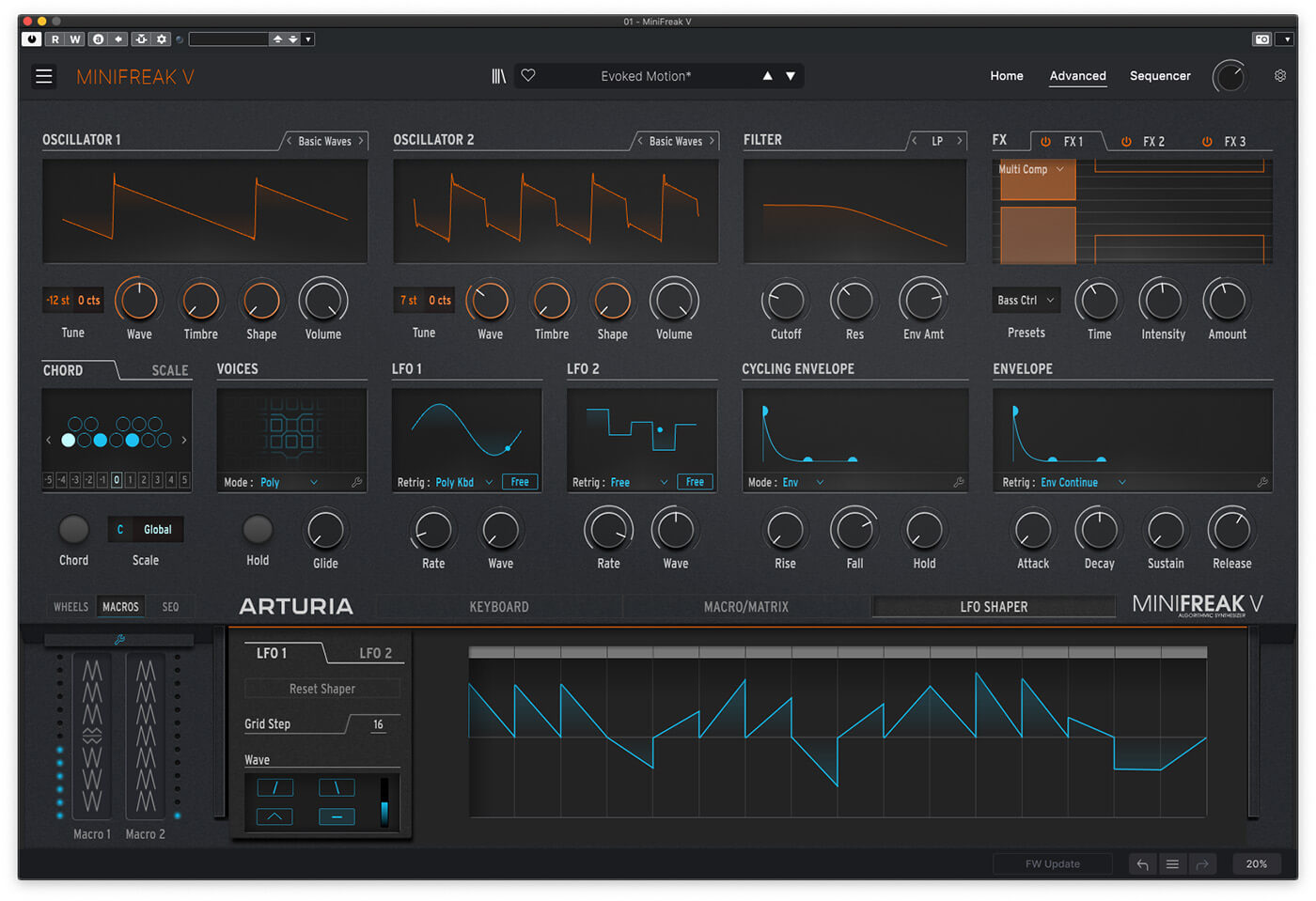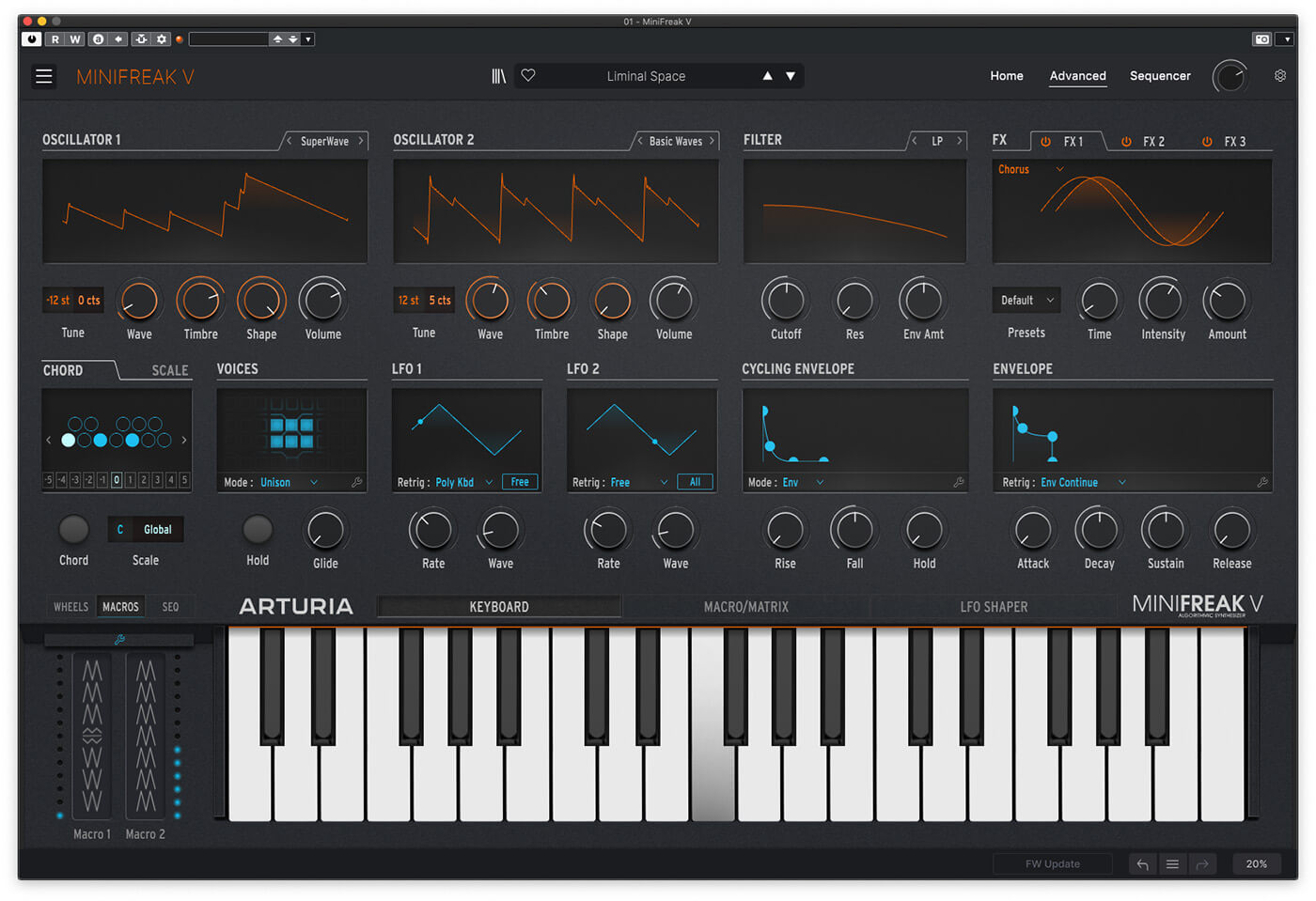Arturia MiniFreak V review: A big-hitting hardware synth goes virtual
Released at the tail-end of 2022, Arturia’s MiniFreak synthesizer impressed us with its small size and big sound – but will a virtual version prove similarly impressive?

Review Overview
Our rating
9
Our verdict
⊕ Faithful emulation of the hardware MiniFreak’s analogue filter
⊕ Direct translation of oscillator algorithms, LFOs, envelopes and FX
⊕ Easy modulation routing via modulation Matrix
⊕ Graphical programming of sequence and LFO patterns
⊕ Ubiquitous integration with MiniFreak hardware
⊖ Oscillator outputs cannot be panned
Given that MiniFreak V is a virtual version of one of Arturia’s own hardware synths, it’s little surprise that the software’s synthesis engine is practically identical to the hardware’s (check out our review for details about that engine). Indeed, with the exception of the filter stage, which in the hardware MiniFreak is 100 per cent analogue, MiniFreak V’s synthesis engine is identical to MiniFreak.
So, the pair of super-flexible algorithmic oscillators aren’t modelled, they’re the same; the ADSR and Cycling envelope generators aren’t modelled, nor are the pair of LFOs (with ability to create user-defined patterns), they’re the same; the three-slot effects section isn’t modelled… you get where we’re going here!

Of course, the primary advantage of this is that it allows hardware and software to operate in complete unison, their settings and parameters perfectly synchronised to give a best of both worlds synthesis solution: run as many instances of the MiniFreak V as you need to (or that your system can handle); replace software instances with the MiniFreak hardware as desired (for example when bouncing or “freezing” parts); and have the hardware provide complete hands-on control over any software instance. It’s a tremendously powerful combination, but now that MiniFreak V is available to all-comers it’s worth considering how it stands up on its own.
The only difference from a sonic perspective lies in the multi-mode filter section. Arturia’s modelling expertise is on full show here, delivering a remarkably faithful emulation of the hardware’s all-analogue multi-mode filter. We said in our review of the hardware that “there’s nothing quite like the real thing”, and we stand by that, but the difference is undeniably subtle and we doubt anybody could hear that difference once a synth line is nicely balanced within a mix.

Of course, what MiniFreak V can’t recreate is the hardware’s hands-on, performance-centric control panel. The software’s GUI is nonetheless intuitive and well laid out, and has some benefits of its own such as realtime readouts of oscillator waveforms, LFO waveforms and positions, and envelope shapes and positions. There are also a number of tasks that are considerably easier to perform in MiniFreak V than they are on the hardware, such as creating custom LFO patterns, and programming the pattern sequencer/arpeggiator.
MiniFreak V can of course map incoming controller messages to its parameters, so you can use any hardware controller to give you that direct control, but this is nothing like as ubiquitous and tight an integration as when syncing the software with MiniFreak hardware.

But there’s also a nice middle ground available if you team up MiniFreak V with an Arturia Lab controller and the accompanying AnalogLab wrapper/librarian software. AnalogLab provides preset and programmable controller mappings, and prevents the dreaded parameter jumps when a controller’s position doesn’t match the controlled parameter’s value.
Like its hardware counterpart, MiniFreak V is an astonishing synth. Its algorithmic oscillators give it a huge range of different voices, and the quality of sound is richly satisfying. It is at its best when teamed up with MiniFreak hardware, but it is nonetheless an awesome new addition to Arturia’s V synth range.

Key Features
- Software synthesizer for AAX, AU, VST and standalone
- All 256 patches found on MiniFreak hardware
- Synchronise with MiniFreak hardware
- Two simultaneous algorithmic oscillators
- Monophonic, 6-voice polyphonic and 12-voice paraphonic voicing
- Multi-mode filter (low-pass, band-pass and high-pass)
- 2x LFO with programmable wave patterns
- ADSR and Cycling envelopes
- Modulation Matrix
- 2x Macros for modulating up-to four parameters simultaneously
- Pattern sequencer and arpeggiator
- Built-in chord mode with multiple scales and user-definable scales
- €199 (Intro offer of €99 until 2nd February)
- Contact Arturia
- Buy: Arturia